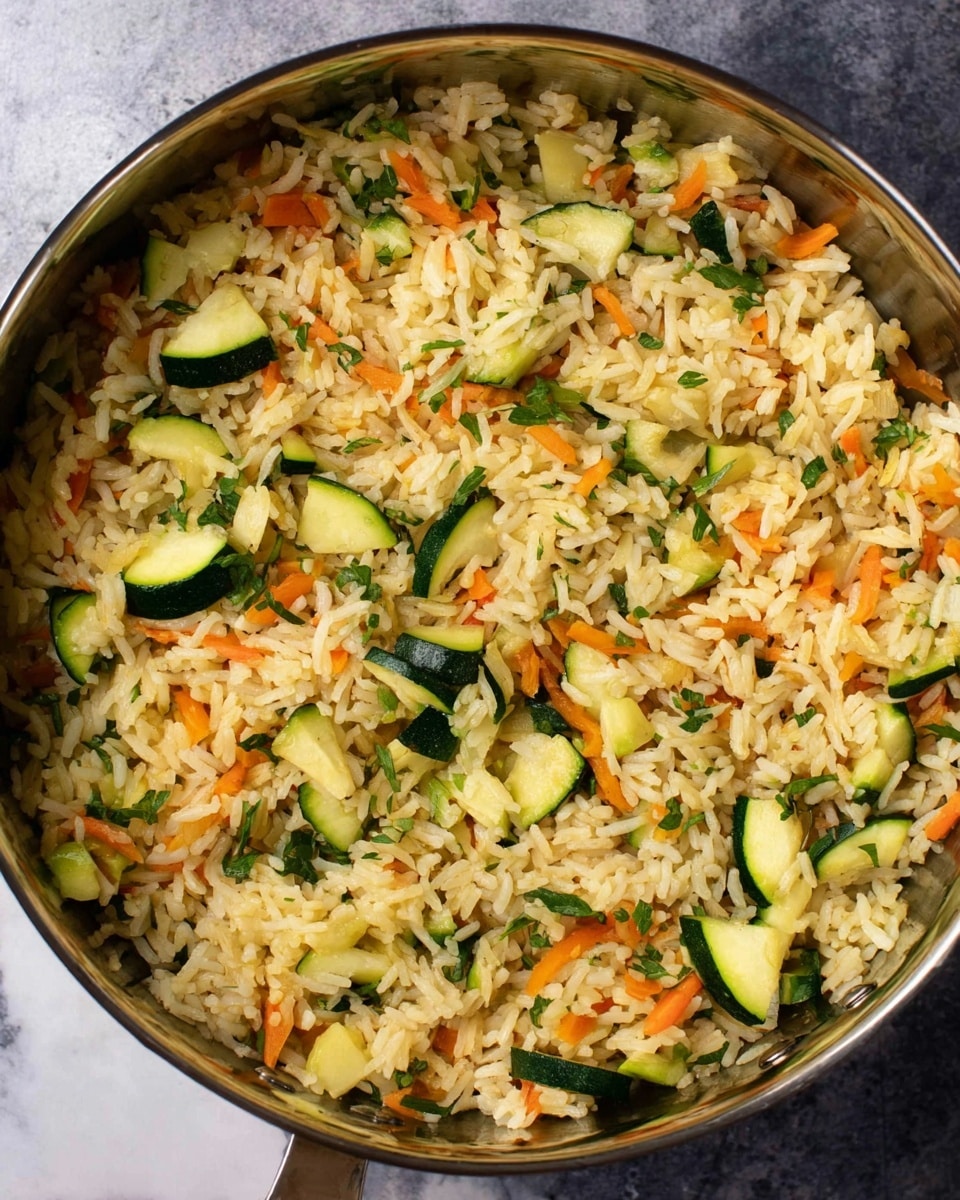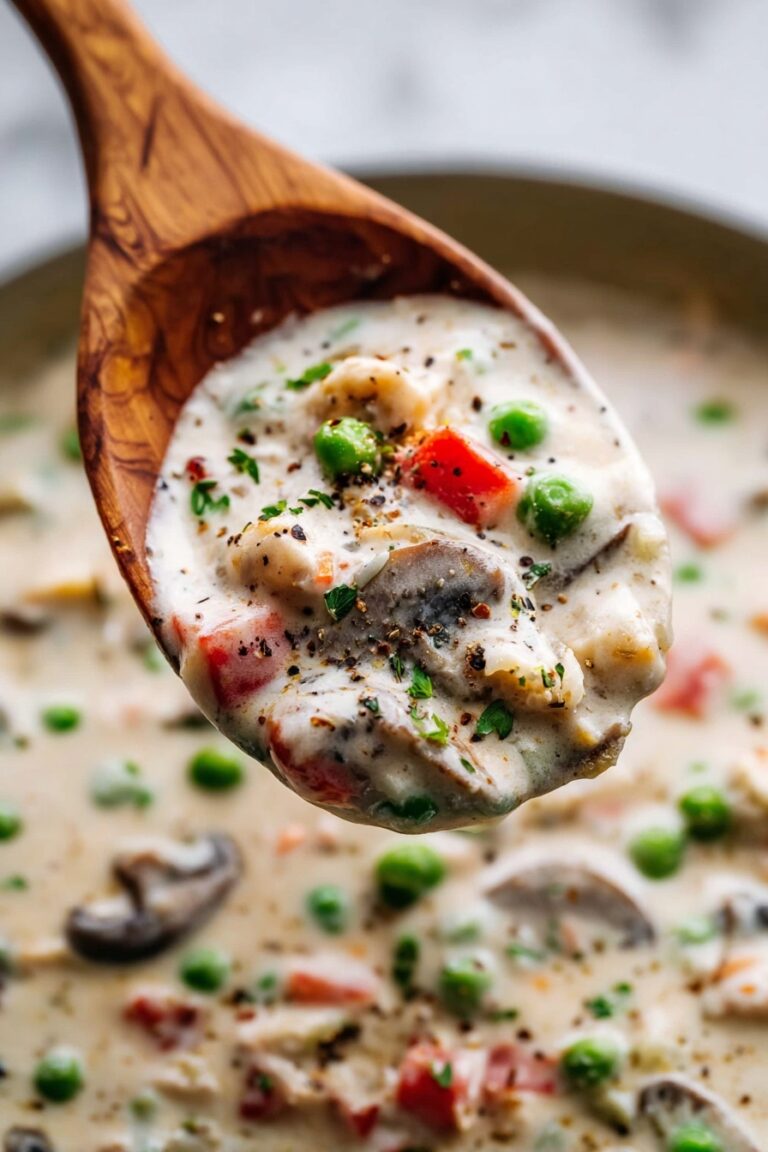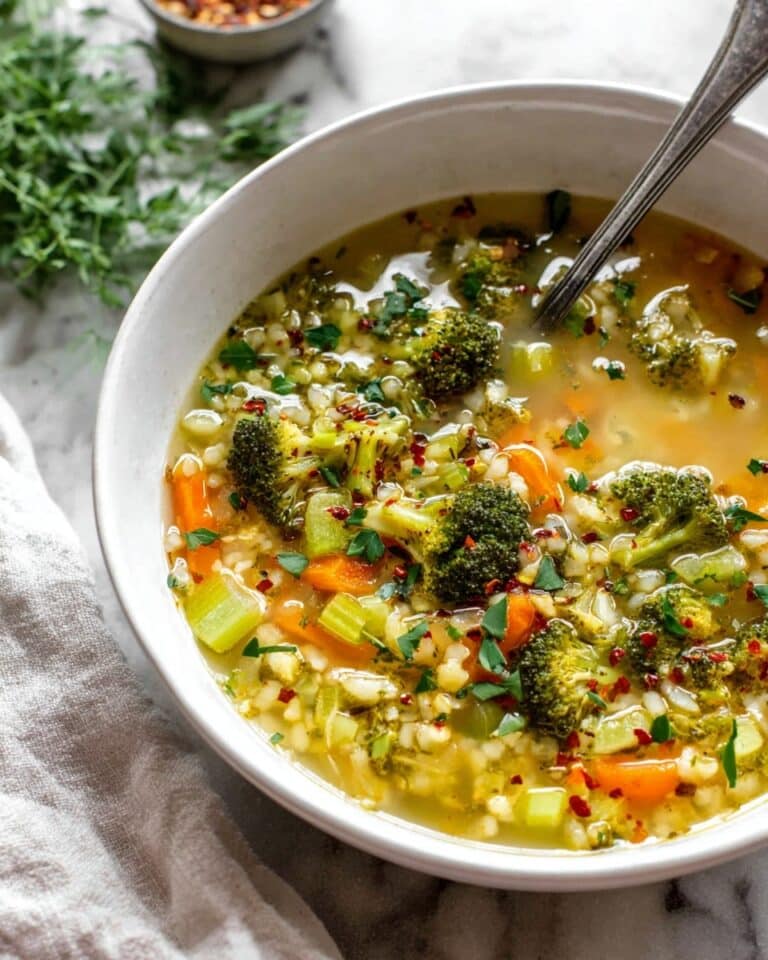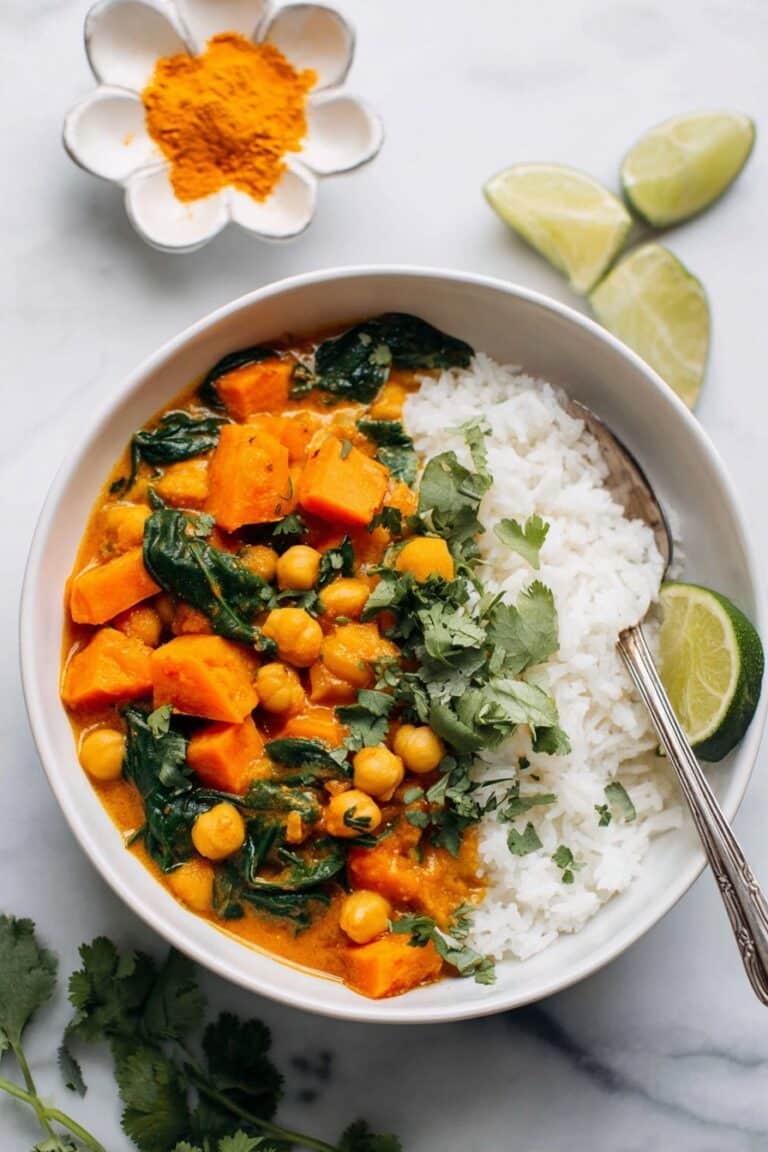Easy Vegetable Rice Pilaf Recipe
If you’re looking for a dish that’s cozy, flavorful, and just downright satisfying, you’ve got to try this Easy Vegetable Rice Pilaf Recipe. It’s one of those recipes I keep coming back to when I want a comforting meal without fuss. The beautiful thing is how simple ingredients come together to pack such a tasty punch — trust me, whether you’re a seasoned cook or a total beginner, you’ll enjoy making and eating this pilaf as much as I do!
Why This Recipe Works
- Simple Ingredients, Big Flavor: A mix of fresh herbs, garlic, and lemon transforms basic rice into a vibrant dish.
- Textural Contrast: Toasting the rice first and adding tender zucchini keeps every bite interesting.
- One-Pan Wonder: Minimal cleanup thanks to cooking everything in a single skillet.
- Versatile and Customizable: Easy to swap veggies or herbs depending on what you have on hand.
Ingredients & Why They Work
The magic of this Easy Vegetable Rice Pilaf Recipe really owes to the ingredients harmonizing in both flavor and texture. I always recommend fresh herbs when possible for the brightest taste, but dried versions work terrific too. Plus, choosing the right broth will elevate the dish without extra effort.

- Vegan butter (or oil): Adds richness and helps sauté the onion to sweetness.
- Yellow onion: Its natural sweetness forms the savory base for the pilaf.
- Salt: Essential for seasoning at different cooking stages.
- White rice: Choose a long-grain if you can for fluffier, less sticky results.
- Garlic: Freshly minced packs the best punch of flavor.
- Carrots (shredded): Bring a subtle sweetness and color contrast.
- Sage, thyme, rosemary: Fresh herbs are best, but dried gives a rustic flavor. These three add an earthy, aromatic profile.
- Hot broth: Vegetable or chicken broth infuses the rice as it cooks for more depth than plain water.
- Zucchini: Sliced into quarter moons for a tender yet slightly crisp bite when cooked gently.
- Lemon juice: A splash brightens up the whole dish at the end with fresh acidity.
- Parsley: Chopped fresh, it adds a herbal note and pops of green color.
- Black pepper: Freshly ground provides mild heat and balances flavors.
Tweak to Your Taste
I often play around with this recipe based on what veggies I have lurking in the fridge or what herbs are in season. That’s what I love about this Easy Vegetable Rice Pilaf Recipe—you can make it totally yours.
- Variation: One time I swapped zucchini for shredded sweet potatoes, and it gave the pilaf a lovely natural sweetness and a more substantial texture—absolutely delicious!
- Herb swaps: Feel free to use basil, oregano, or even dill to change up the flavor profile.
- Spice it up: Toss in a pinch of red pepper flakes if you like a little heat.
- Make it vegan: Stick with vegan butter and vegetable broth for a totally plant-based pilaf.
Step-by-Step: How I Make Easy Vegetable Rice Pilaf Recipe
Step 1: Sauté the Onion to Sweet Perfection
Start by heating your vegan butter over medium-low heat—don’t rush this, patience makes all the difference. When it’s melted, toss in the finely diced onion with a pinch of salt. Let it gently cook until translucent and sweet, about 5 minutes. This step builds a savory aroma that sets the tone for the whole dish.
Step 2: Toast the Rice and Mix in Veggies
Now add the rinsed rice along with minced garlic, shredded carrots, and your chopped herbs. Stir frequently for about 3 minutes, letting the rice get lightly toasted. This step gives the pilaf its characteristic nutty undertone—don’t skip it! Keep your eyes on the pan so nothing burns.
Step 3: Simmer with Hot Broth for Flavor
Pour in the hot broth, stir it all up and crank the heat to medium. Once it boils, bring it down to low and cover the skillet tightly. Let it simmer for 10 minutes—this is when the rice absorbs that savory broth goodness.
Step 4: Add Zucchini and Finish Cooking
After the initial cooking, fold in the zucchini slices. Cover and let them steam with the rice for another 5 minutes on low heat. Their mild flavor and slight crunch add freshness and texture that really elevate the pilaf.
Step 5: Let it Rest, Then Brighten Up
Turn off the heat and leave the pot covered for 10 more minutes—this resting period helps the rice fully fluff up and finish absorbing flavors. When you uncover, fluff the pilaf gently with a fork. Stir in fresh lemon juice and chopped parsley for that final burst of brightness. Season with extra salt and pepper if needed, and you’re ready to serve.
Pro Tips for Making Easy Vegetable Rice Pilaf Recipe
- Rinse and Drain Your Rice: This removes excess starch and prevents your pilaf from turning gummy.
- Use Hot Broth: Adding hot broth keeps the cooking process smooth and avoids temperature shocks that lead to uneven cooking.
- Don’t Peek Too Often: Keep the lid on during simmering to let steam do its magic; lifting the lid can interrupt the cooking process.
- Fresh Herbs Over Dried When Possible: They give a lively, fresh flavor that dried can’t fully replicate.
How to Serve Easy Vegetable Rice Pilaf Recipe
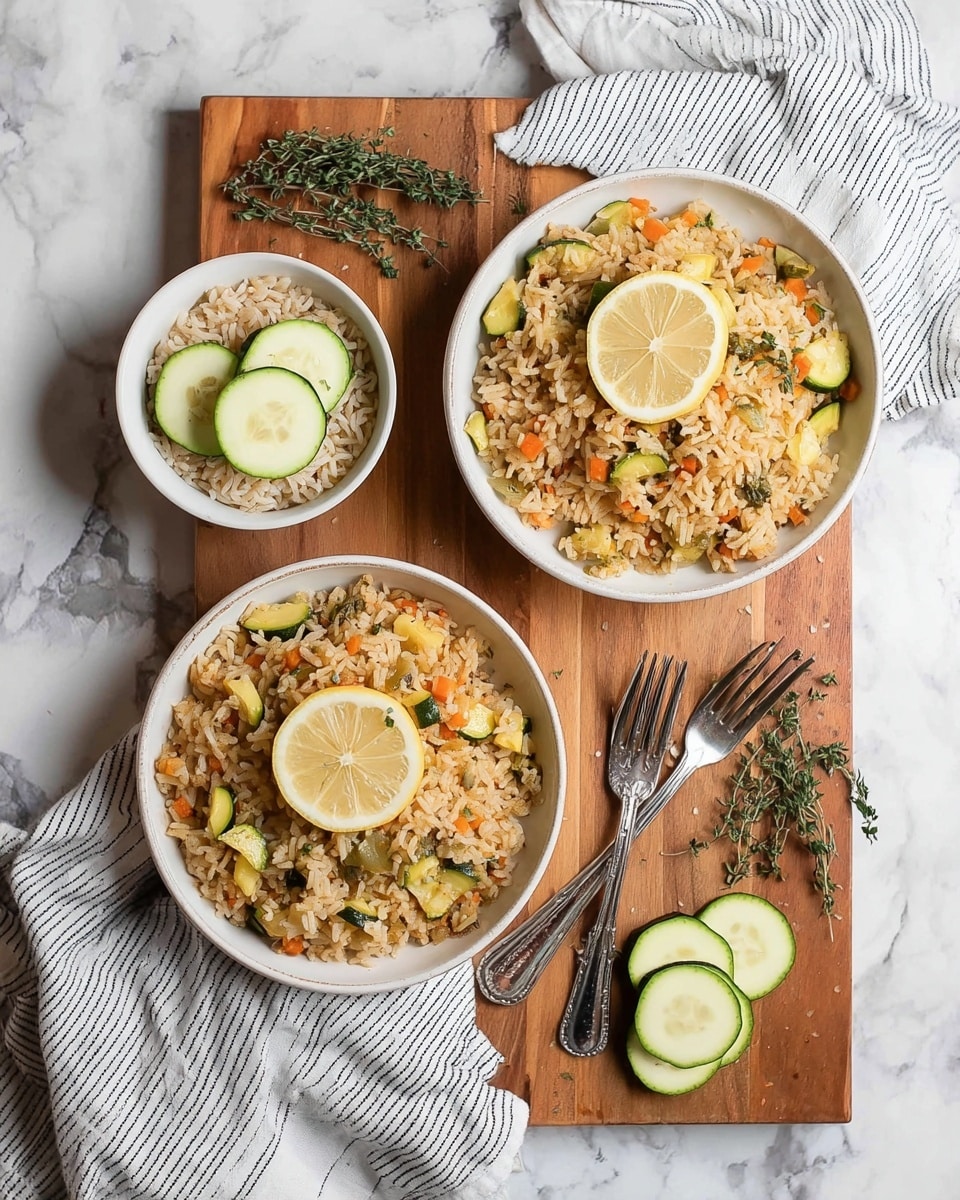
Garnishes
Whenever I serve this pilaf, I never skip a sprinkle of fresh parsley on top—it adds that final touch of color and herbaceous brightness. Sometimes I also add a little lemon zest for an extra zing. If I’m feeling a bit fancy, toasted pine nuts or slivered almonds add a lovely crunch.
Side Dishes
This Easy Vegetable Rice Pilaf Recipe pairs beautifully with grilled veggies, roasted chicken, or a simple sautéed spinach side. It’s great as a main too—you can add chickpeas or cooked lentils for a protein boost.
Creative Ways to Present
For holidays or dinner parties, I like serving the pilaf inside hollowed-out bell peppers or tomatoes—it makes the presentation so inviting. Another crowd-pleaser is shaping the rice into little mounds using a small bowl to make individual servings look neat and elegant.
Make Ahead and Storage
Storing Leftovers
I store leftovers in an airtight container in the fridge, where the pilaf keeps well for up to 4 days. Just make sure it’s completely cooled before sealing to avoid condensation, which can make the rice mushy.
Freezing
Freezing this rice pilaf works pretty well. I portion it out into freezer-safe containers or bags, and it keeps for a couple of months. When you thaw it, the texture softens a bit, so I recommend reheating gently with a splash of broth to refresh it.
Reheating
Reheat on the stove over low heat, stirring occasionally with a bit of broth or water to loosen the rice and keep it from drying out. The microwave works too—cover the container loosely and heat in short bursts, stirring in between.
FAQs
-
Can I use brown rice instead of white rice in this pilaf?
You can absolutely swap brown rice for white, but keep in mind that brown rice takes longer to cook and absorbs liquid differently. You’ll need to increase the broth amount and extend the simmering time by about 20-25 minutes. It’s delicious but requires a bit of patience!
-
What can I substitute if I don’t have fresh herbs?
Dried herbs work wonderfully here—just reduce the quantity to about one-third of the fresh amount since dried herbs are more concentrated. For example, use ½ teaspoon dried sage instead of 1½ teaspoons fresh, which I recommend in the recipe.
-
Is it possible to make this recipe in a rice cooker?
Yes! Just follow the sauté steps in a pan first to toast the rice and veggies, then transfer everything to the rice cooker with the hot broth. Cook according to your rice cooker’s white rice setting. Add the zucchini in the last 5-10 minutes if your cooker has a “keep warm” or multi-stage cooking option.
-
Can I add protein to the Easy Vegetable Rice Pilaf Recipe?
Definitely! Chickpeas, cooked lentils, or even cubed tofu feel right at home here. Stir them in after the rice is cooked, letting them warm through before serving.
Final Thoughts
This Easy Vegetable Rice Pilaf Recipe has become one of my kitchen go-tos because it’s straightforward, forgiving, and delivers consistent, comforting results time after time. I hope when you try it, you find it as warm and satisfying as I do—like a hug on a plate. Don’t hesitate to tweak the veggies or herbs to make it your own, and above all, enjoy the process and the delicious outcome!
Print
Easy Vegetable Rice Pilaf Recipe
- Prep Time: 10 minutes
- Cook Time: 28 minutes
- Total Time: 38 minutes
- Yield: 4 servings
- Category: Side Dish
- Method: Stovetop
- Cuisine: American
- Diet: Vegan
Description
A simple and flavorful Easy Vegetable Rice Pilaf made with aromatic herbs, fresh vegetables, and vegan butter. Perfect as a wholesome side dish or a light main course, this recipe combines tender rice with zucchini, carrots, and a medley of fresh herbs, finished with a splash of lemon juice and fresh parsley for brightness.
Ingredients
Main Ingredients
- 2 tablespoons vegan butter (or oil)
- 1 small yellow onion, finely diced
- ½ teaspoon salt
- 1 cup uncooked white rice, rinsed and drained
- 4 cloves garlic, finely minced
- ½ cup carrots, shredded
- 1½ teaspoon chopped sage (or ½ tsp dried)
- 1½ teaspoon chopped thyme (or ½ tsp dried)
- 1½ teaspoon chopped rosemary (or ½ tsp dried)
- 1 ¾ cups hot broth
- 1 large or 2 small zucchini, cut into quarter moons
- 2 tablespoons fresh lemon juice
- 2 tablespoons fresh parsley, chopped
- Black pepper, to taste
Instructions
- Heat the Butter and Sauté Onion: Heat the vegan butter in a large skillet over medium-low heat. Add the diced onion and salt, then sauté until translucent, about 5 minutes, stirring occasionally to prevent burning.
- Add Rice, Garlic, Carrots, and Herbs: Stir in the rice, minced garlic, shredded carrots, and chopped herbs (sage, thyme, rosemary). Cook while stirring frequently until the rice is lightly toasted and fragrant, about 3 minutes.
- Cook Rice with Broth: Pour in the hot broth and stir to combine. Increase the heat to medium and bring it to a boil. Once boiling, reduce the heat to low, cover the skillet, and simmer for 10 minutes to allow the rice to absorb the liquid.
- Add Zucchini and Continue Cooking: Fold in the zucchini pieces, cover again, and cook on low heat for an additional 5 minutes until the zucchini is tender and the rice is fully cooked.
- Let Rice Rest: Remove the skillet from heat and let the rice pilaf sit covered for 10 minutes. This resting period helps the rice finalize cooking and results in a fluffy texture.
- Fluff and Season: Uncover and fluff the rice gently with a fork. Stir in the fresh lemon juice and chopped parsley. Adjust seasoning with salt and black pepper to taste.
- Serve: Serve the vegetable rice pilaf warm, garnished with extra parsley if desired. Enjoy as a delicious side or light main dish.
Notes
- For a different flavor and texture, try substituting shredded sweet or white potatoes instead of carrots.
- Nutrition information does not include any additional salt or black pepper added to taste.
- Rinse white rice thoroughly before cooking to remove excess starch for a fluffier pilaf.
- Use vegetable broth for a vegan-friendly version or chicken broth if not restricted.
Nutrition
- Serving Size: 1 cup
- Calories: 180 kcal
- Sugar: 2 g
- Sodium: 400 mg
- Fat: 6 g
- Saturated Fat: 1 g
- Unsaturated Fat: 4 g
- Trans Fat: 0 g
- Carbohydrates: 28 g
- Fiber: 2 g
- Protein: 4 g
- Cholesterol: 0 mg

